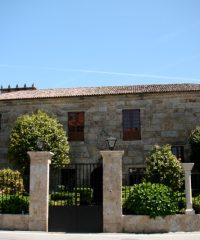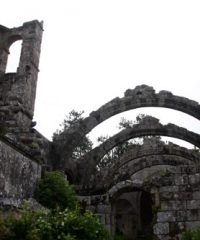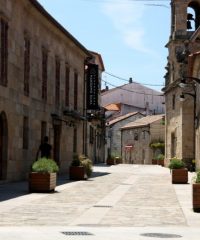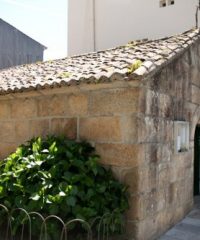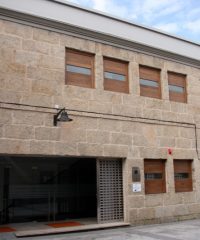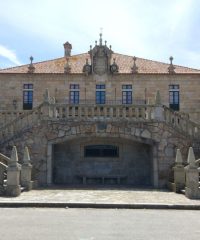- Cambados Town
- Fefiñáns Town
- San Tomé Town
Fraga House is a beautiful building from the late XIX century, which occupies the land where probably stood the cloister of the old convent of San Francisco.
It was built on the site occupied by the old home of Lope Sanchez de Ulloa by his daughter María Sánchez de Ulloa, being the residence of their sons, Diego de Acevedo, military, and Alonso de Fonseca III, archbishop of Santiago and Toledo and one of…
Old rectory XVI century, became part of the Museum Network Cambados City Council in 2001, constituting the first museum of this issue in Galicia, and one of the first in Spain.
Located in the foothills of Mount A Pastora, in the environs of an old Castro, lie the remains of the old parish church of Santa Mariña, Cambados patroness.
Located on Mount A Pastora, very close to the ruins of Santa Mariña. It was built in the late XVI century by Juan Fariña, notary of the town, and placed under the patronage of Buen Jesús and the Virgin of Las Nieves, the latter replaced by the…
Beautiful pedestrian street connecting the center of Cambados with the fishing village of San Tomé. In this street we find the Moltó Pazo, the Hospital Chapel and Santa Margarita Chapel.
Ordered the construction of the lords of Bazán and Alonso Troncoso y Sotomayor. It was the old XVI century Royal Hospital, which nowadays houses a café and a renowned restaurant with a Michelin star.
Formerly known as the chapel of San Roque, was part of the pazo belonging to the family of Abraldes, disappeared in the XVIII century and of which only the chapel remained standing. In front of the chapel, we can see a stone cross, typical …
The Conference and Exhibition Hall José Peña was inaugurated on March 25, 2011, and contains within its walls nearly a century of history. The name that has been given is the founder of the canning and ex Cambados Mayor, José Peña Oubiña.
Diego de Zárate and Murga, I Montesacro Marquis by decree of Felipe V, built in the town of San Tomé, the Montesacro Pazo in the XVIII century, the Baroque style of the time.


